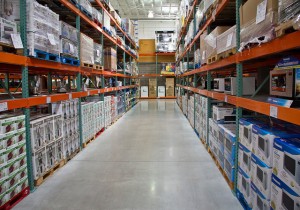Whether you’re gearing up for a busy season, or expanding your operations after a welcomed or unexpected growth spurt, making the proper warehouse selection is a crucial component to ensure your business remains profitable.
As you set out in search of the perfect, or at least perfect for now, warehouse space, don’t go in blind. Keep these five tips on hand to avoid getting a bum deal on your next warehouse contract.
- Be selective
Treat the contract as though you were going to purchase the structure outright. Don’t settle for the first warehouse you find, even if you’re on a time crunch. Make sure all your key players and decision makers have a chance to review and weigh in before you commit. You can also use site selection and modeling tools to help you determine the prime location for your warehouse. There’s nothing that says it can’t be cities or states away depending on what you’re shipping and where. You should also check to ensure the space comes outfitted with the necessary systems support. Be it IoT technology or involved computerized fulfillment software, make sure you get a warehouse with the kind of systems capability required to support your specific inventory requirements.
- Location, Location, Location

Flickr/SeniorLiving
We’ve covered the fact that your warehouse operations may be hundreds or even thousands of miles away from your headquarters and that certain site location/modeling tools can help you settle on a particular area. However, that doesn’t preclude you from properly analyzing its port access. Be it by water, railways or multiple major highways, having secure and varied methods of access is the only way to keep your warehouse’s fulfillment operations running smoothly. In fact, it could be the reason a facility appears to be priced at a steal, so do your homework before you sign off.
- Evaluate Your Expansion Options
When done right, a well thought out warehouse relocation will result in the expansion of your warehouse operations. Or, maybe you’re relocating because you’ve already experienced an increase in output. In which case, you already know that finding warehouse arrangements that can accommodate volume changes will keep you from needing to break your contract in the event you find your operations busting at the seams. You can also look for built in value-added additions such as kitting, reverse logistics, or pick and pack for extra insulation in the event of a growth spurt.
- Visit it Before you Sign with it
No matter how good it seems on paper, make sure that you and several important decision makers on your team see the space in person. As you navigate there, asses the roads and access points, integrity of the building structure, signs of ongoing maintenance practices, and its cleanliness to name a few. Make a note of any damaged warehouse areas so you can negotiate that they be fixed prior and as a condition to signing anything binding.
- Make Sure to Clarify the Timing
Get clear about the timeline of your operation’s relocation goals. If you’re looking to make the move immediately, you may need to negotiate a time that works with your operation’s peak fulfillment seasons, but that also gives the current operations time to clear out and set up your physical and technical inventory requirements. Alternatively, you could run into a situation where the current owners are desperate to unload and are willing to give a reduction in price based on your ability to relocate within a certain amount of time. In any event, total ramp up for shipping and receiving inventory should be in full swing within one to six weeks.
